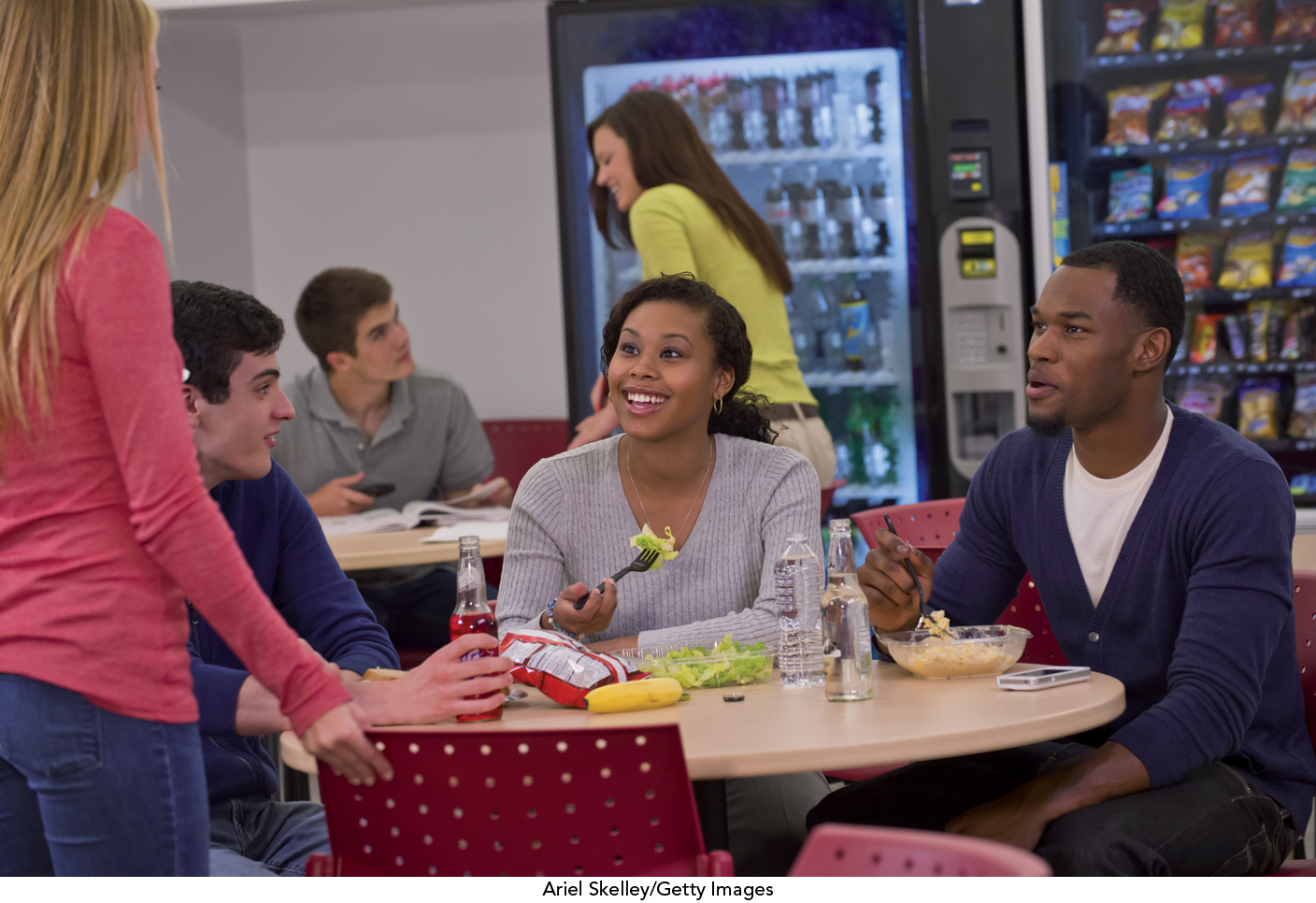Chapter Introduction

Determinants of Eating Behavior, Disordered Eating, and Alcohol HOW FOOD CHOICES ARE INFLUENCED BY SOCIAL NORMS
Page 437
LEARNING OBJECTIVES
Identify at least five determinants of eating behavior and describe how each determinant might influence healthy food choices (Infographic 19.1)
Discuss factors that may contribute to dietary and weight changes during the college years (Infographic 19.2)
Describe characteristics of and differences among anorexia nervosa, bulimia nervosa, and binge eating disorder (Infographics 19.3 and 19.4)
Discuss possible psychological and physical indicators of an eating disorder (Infographics 19.3 and 19.4)
Define moderate alcohol consumption and what is considered a standard drink (Infographic 19.5)
-
-
-
When you find yourself snacking on empty-calorie foods, grabbing that candy bar in the checkout aisle, or eating more than you probably should, do you ever wonder why you’re doing it? Why people eat the way they do has long intrigued Brian Wansink, director of the Food and Brand lab at Cornell University. Wansink has spent decades studying this question. Although we might think we choose certain foods because they’re good for us, or because they are delicious, or because we’re having biological “cravings,” Wansink has found that many of our food choices are actually determined by social, environmental, and cognitive factors that have little to do with our physical hunger or need for sustenance. We eat differently—and even taste things differently—depending on whom we’re with, the size of our plate, the music we’re listening to, the foods we see, the mood we’re in, and even the color of the room in which we dine. As Wansink wrote in his book Mindless Eating, “everyone—every single one of us—eats how much we eat largely because of what’s around us.”
Page 438

Brian Wansink, PhD is the John Dyson Professor of Consumer Behavior at Cornell University. He is the author of over 150 academic articles and books, including the best-selling Mindless Eating: Why We Eat More Than We Think (2006). Wansink’s academic research is on topics such as eating behavior, behavioral economics, and behavior change.
In one study, for instance, researchers found that people who were offered three different flavors of yogurt ate 23% more than those who were offered one flavor. That’s because we tend to eat more when we’re offered more variety. Often cited rat studies have shown that rodents consume more food and gain more weight when offered “cafeteria-style” diets rather than just plain rat chow. And the more people we dine with, the more we eat—studies have shown that if you dine with one other person, you’ll eat about 35% more than you would dining alone, whereas when you eat with seven other people, you’ll eat as much as 96% more than you would alone. You also eat more when you’re served more. In an amusing study conducted in 2000, Wansink invited people to a free movie matinee and gave them either a medium-sized or large-sized bucket of stale popcorn. Despite the fact that the popcorn had been popped five days earlier—in other words, it wasn’t very appetizing—those who had been given the large size ate 53% more than those given the medium.
FRESHMAN 15 popular term that perpetuates a misconception regarding a pattern of weight gain associated with the first year of college; in reality, weight gain averages three to four pounds
It’s perhaps not surprising, then, that when adolescents make the big switch from living at home to residing at college—where they have new and different food options, different social circumstances, demanding schedules, and a new dining environment—many students experience changes in how and what they eat. Although the infamous Freshman 15—the term used to describe the weight gain associated with the first year of college—is a myth, weight gain does occur in the first year of college but studies show that it averages to only about three or four pounds. This weight gain may be due in part to so many changed environmental factors, making us more likely to overeat.
Wansink’s research has found, too, that as college semesters move forward, students tend to eat less healthfully over time, filling their trays with potato chips, curly fries, and chicken fingers instead of healthier options like grilled chicken or fish, vegetables, whole grains, yogurt, and fresh fruit. He speculates that as students get more stressed throughout the semester, they make poorer and more impulsive food choices—stress, in other words, trumps willpower and good intentions.
The college years are exciting and challenging times for young adults as they experience more independence, responsibility, and new situations. They are also a time of food-related transition, as college students change their eating patterns, gain more responsibility over their choices, and become more influenced by their peers and changes in their food environment. Unfortunately, these changes tend to make college students eat more poorly. Most teens and college students do not consume the balance of nutrients recommended by dietary guidelines, and this in turn can undermine their physical and psychological health and development, including their academic performance.
Page 439

Experiencing a new food environment. The college cafeteria provides the opportunity to sample new foods.


